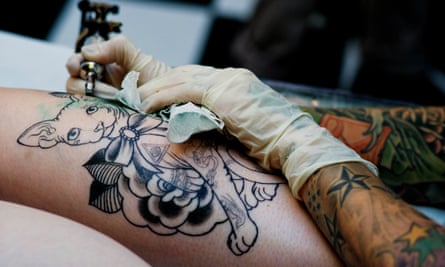“The hipster is a capitalist.” So said Matt Hancock, Theresa May’s new minister for digital and culture, who replaced Ed Vaizey in July this year. A standout soundbite from Hancock’s buzzword-laden keynote speech delivered last Friday at the Creative Industries Federation meet and greet event for culture’s great and good at the British Film Institute. Many creative industries “leaders” lapped up his speech which, as well as lauding micro-enterprising hipsters, also depicted James Bond delivering a post-Brexit “global calling card” – UK cultural capital – from his Aston Martin, bizarrely named-checked King Canute, and heralded “Uber-style dynamic pricing”.
Cultural capital has always been Britain’s soft power weapon of choice; the perfect accompaniment to a, let’s politely say, “proudly robust”, heritage of rampant jingoism that has long served to justify our lust for colonialism and imperialism in all its forms. Hancock recognises this, and the fact that the hipster epitomises both the old and the new. A perfectly preened vision of 21st century Conservativism.
The hipster may be a capitalist, although aren’t we all nowadays? The hipster is also ethical, sustainable and highly mobile. Retro, beautifully reconditioned fixed wheel bikes with 70s steel frames and state of the art aero wheels are their trusty steeds. With carefully coiffed beards and retro haircuts, they dwell in craft beer drinking dens, pop-up shops, tattoo parlours, and restaurants selling cereal. The hipster is so very carefully considered: everything stylised; everything thought through.

A recent visit to my newly opened, “traditional barber” gave an insight into the world of the hipster. The thirtysomething owner “crafted” each haircut as a “unique experience”. Reclaimed barbering implements and blades hung on hidden magnetic pads beneath salvage yard beams; faux “hunting lodge” panelling was lit by wireless mood lighting; customers sat on “re-engineered” 1920s barbering chairs; hidden state-of-the-art speakers played tech-house from what appeared to be a vintage iPhone dock.
I asked the hipster owner and his beard-nurturing hipster customer (a tattooist from across the road) how they described themselves. “Socialists,” they replied, quickly adding that they were not looking “to build empires”, just to “make a living”. They had both left safe jobs working for the state and local government respectively. This led me to wonder about suggestions that the hipster may represent some form of reincarnated frontiersman/woman or pioneer. In many ways, I think they do. Their styling certainly harks back to the mid-to-late 19th century; to the British colonialists and the western frontiers. These people want to earn a reasonable living, independently, by “crafting” and “creating”. They, like the original pioneers, are explorers and artists and they are capitalists.
Unlike the colonising pioneer of the past, however, the hipster is postmodern, post-industrial, and post-Fordist. It is little wonder, then, that Hancock fetishises the hipster as both an ideal actor in his post-Brexit creative industries fantasy and an exemplar of small-scale, micro-enterprise: a capitalist. An article in the Evening Standard suggested that the minister’s comments might surprise many hipsters, who pride themselves in “breaking away from the mainstream economy with independent-minded and ethical ideas and work practices”. But isn’t this an exact description of the kind of small-scale capitalist “innovation” that Hancock envisages as driving the core of Britain’s much-hoped-for creative industries revolution; itself a coded form of cultural imperialism?
The trouble is that this model of art as part-cultural civiliser, part-economic driver, part-social cohesion improver is deeply problematic. Hancock believes that knocking-up more glass-fronted “cultural quarters” will bring multiple benefits to everyone: “The lesson is clear: make an area interesting and you attract interesting people to work there.” You see, for Hancock, “cultural rebirth, connectivity, and economic revival go hand in hand”. And, of course, the hipster seems to personify these neoliberal ideals. However, whereas the minister said he was keen to avoid the state adopting a “top-down” and “prescriptive approach”, the state is actually doing exactly that, along with the support of capitalist bodies, like the Orwellian-sounding Creative Industries Federation.
It is the establishment that now sees the hipster as the embodiment of autonomous, small-scale capitalist expansionism. But it is not just the hipster cast in this role. Artists are the neoliberal state’s troops. Artists make the first move into post-industrial, post-welfare state wastelands like brownfield sites and council housing estates and sow the seeds of cultural capital. They attract hipsters before, eventually, being displaced by them and their new middle-class neighbours. Both the artists and (some) of the hipsters – the ones who haven’t “settled” yet – will move on, exploring, breaking away (again), developing new potential sites for capital “investment”. And so the cycle of gentrification starts over again.
Hancock knows this. Investors know this. The creative industries (in all their many increasingly homogeneous guises) know this. They believe in miracles because they create them. Hipsters are just the latest stylisation that fits perfectly with the rediscovery of the (economic) value of place. And, just like the gentrifying slogan, “Cupcakes are muffins that believed in miracles”, it would seem that for Hancock, hipsters are people who believe in miracles. For now, at least.
